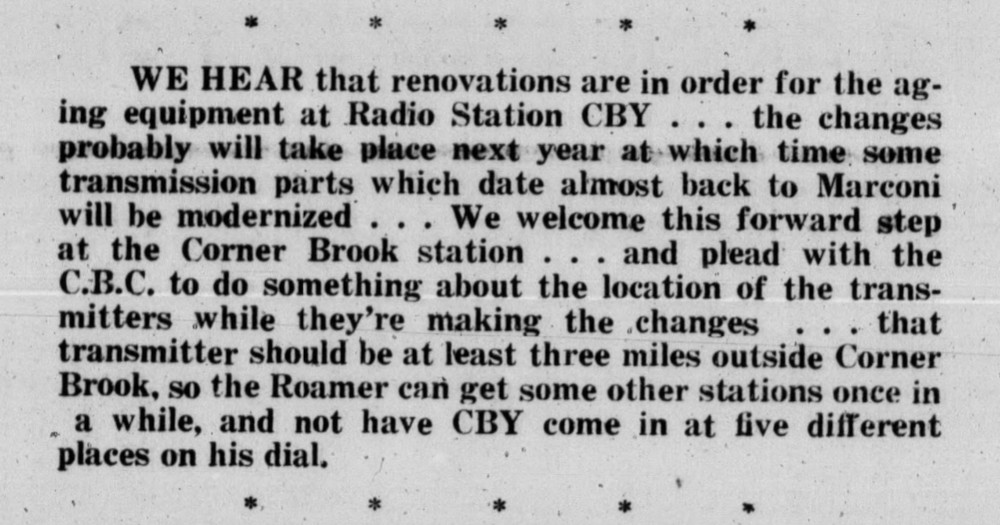Later Additions and the Decline of Wireless
With the opening of the St. John’s station and advances in radio technology, the need for new Marconi stations dwindled. With stations that could easily communicate across the Atlantic, there was no longer a need for a station in every second community. Only a few stations were added to the network after the St. John’s upgrade.
Wireless stations in Cartwright and Fishing Ship’s Harbour, Labrador, opened in 1937. However, not much is known about these stations.
Another station opened in Corner Brook in 1940. Unfortunately, it became known for being unreliable. Many people and newspapers criticized this station. In 1974, it was moved to Stephenville and sold.
The End of an Era
Wireless stations proved to be invaluable to Newfoundland and Labrador in the first half of the 20th century. Given the region’s harsh and unpredictable climate, adding remote communities into the wired telegraph network was difficult or impossible. Wireless stations connected these communities to the rest of the world. They also allowed ships to communicate with each other and with the shore. This made maritime travel much safer.
But eventually newer technologies reduced, and then ended, the need for wireless stations. Stronger materials led to more reliable wired networks. Telephones grew common and were able to communicate much farther, becoming a cheaper and more sustainable option than using wireless stations.
Wireless stations also played a role in their own demise. As radio waves were studied and stronger technology was invented, stations could transmit over greater distances. Fewer but stronger stations could do the job of several weaker stations.
It became more and more obvious that wireless stations were not as useful as they once were. So, the Newfoundland and Canadian governments began to close the stations they deemed unnecessary. They laid off the operators or offered them other government jobs.


